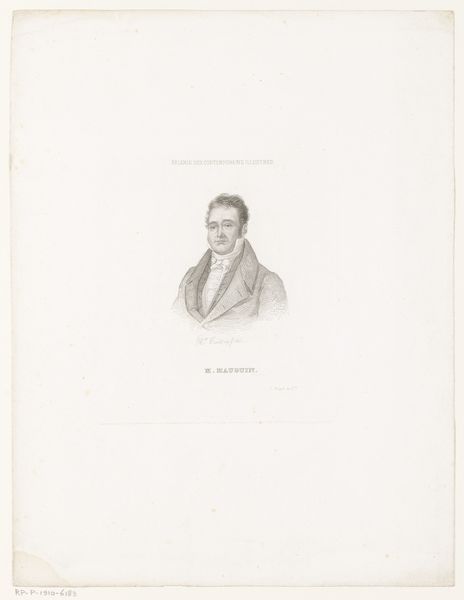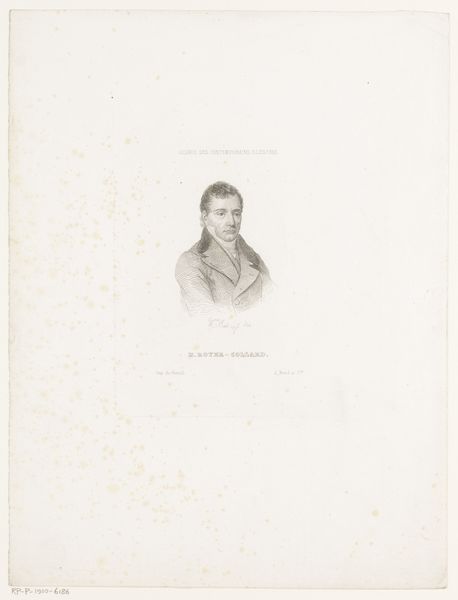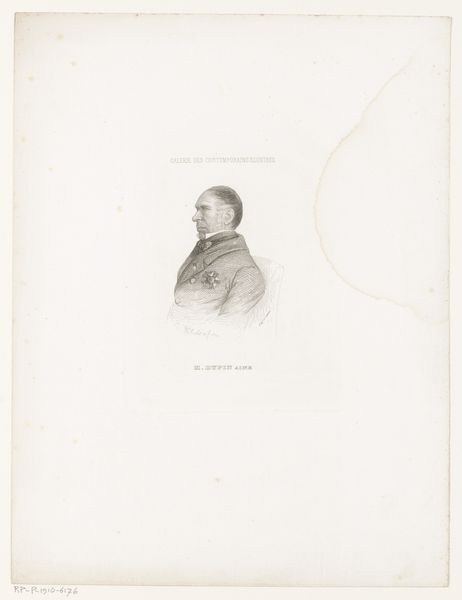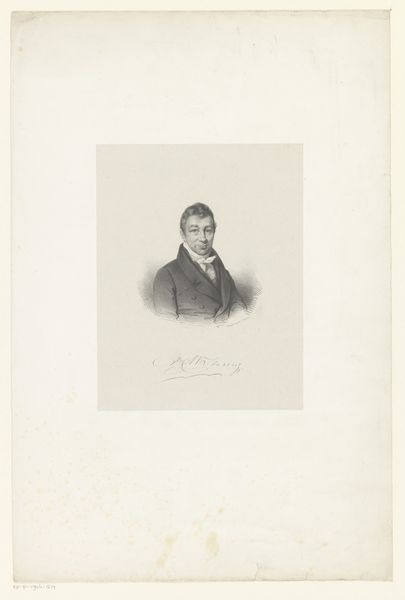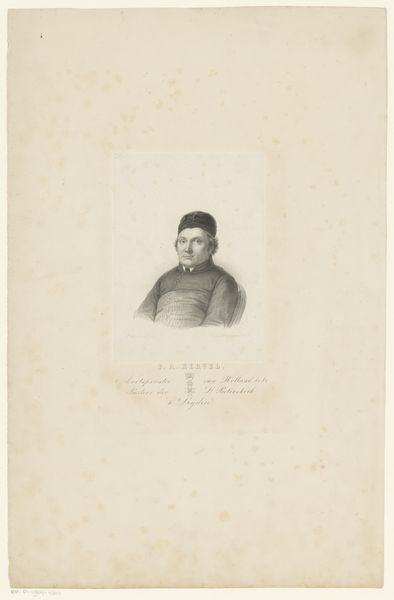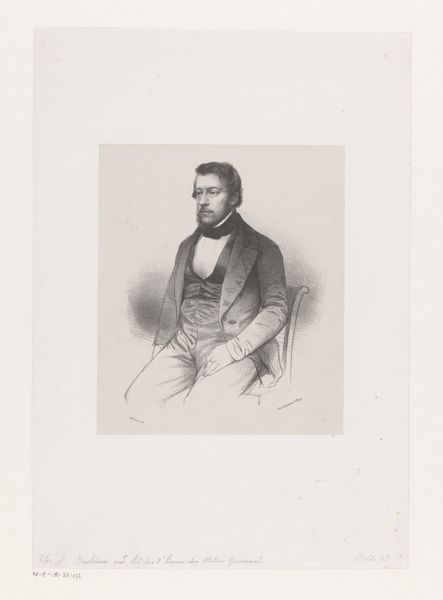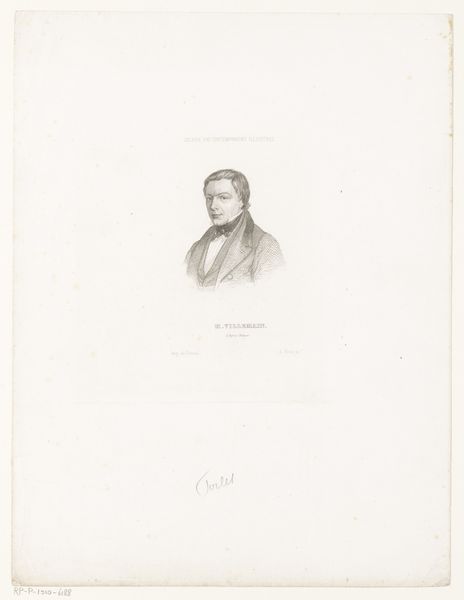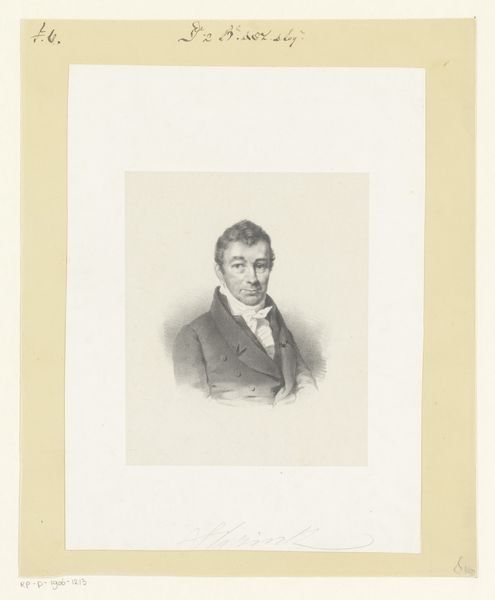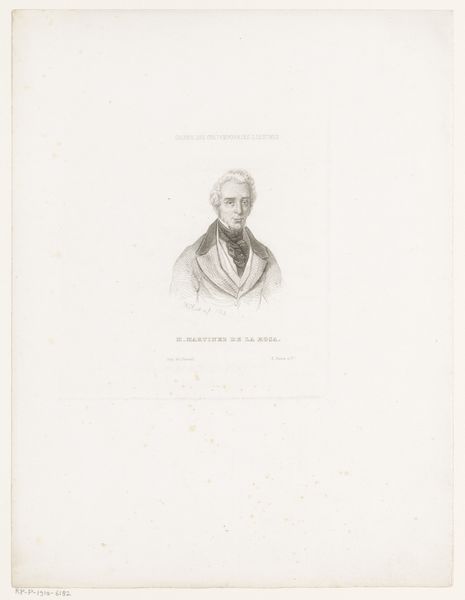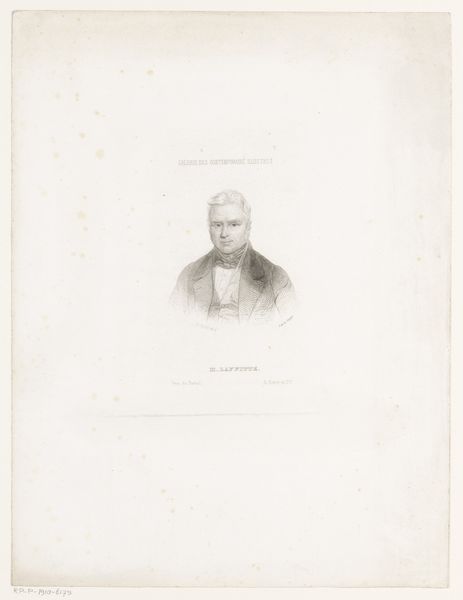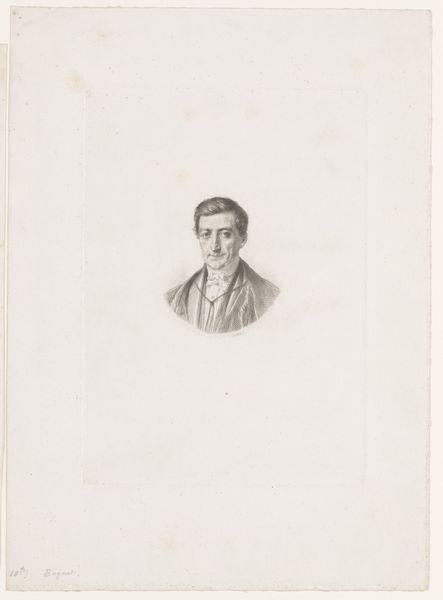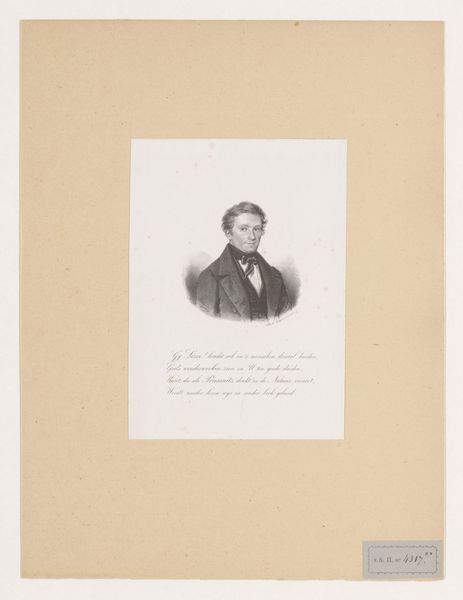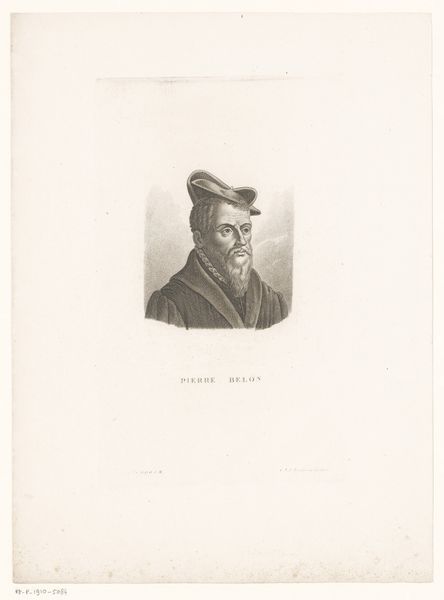
print, paper, engraving
#
portrait
#
neoclacissism
# print
#
old engraving style
#
paper
#
pencil drawing
#
engraving
Dimensions: height 319 mm, width 244 mm
Copyright: Rijks Museum: Open Domain
This is a portrait of Jean-Baptiste de Villèle by Adolphe Torlet, and it was created using the printmaking technique of lithography. Lithography allowed for the relatively quick reproduction of images. The process involves drawing with a grease-based crayon on a smooth stone or metal plate, which is then treated with chemicals so that ink adheres only to the drawn areas. By repeating this process, one can create multiple impressions of the same image, a revolutionary development for disseminating images and information in the 19th century. Considering this, the choice of lithography has social and cultural significance: as printed images became more widespread, a larger audience could engage with art and portraiture. Lithography democratized the image, making it less exclusive and challenging older hierarchies of art production. It allowed artists to reach broader audiences and participate in the burgeoning print culture of the time, raising questions about authorship, originality, and artistic value.
Comments
No comments
Be the first to comment and join the conversation on the ultimate creative platform.

